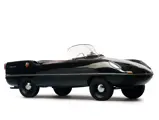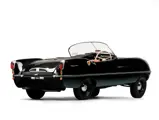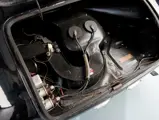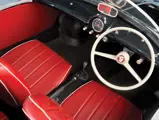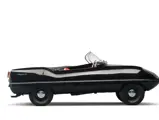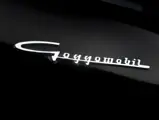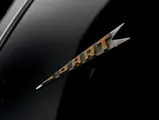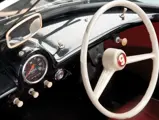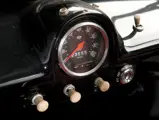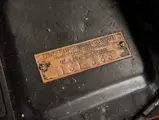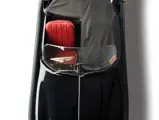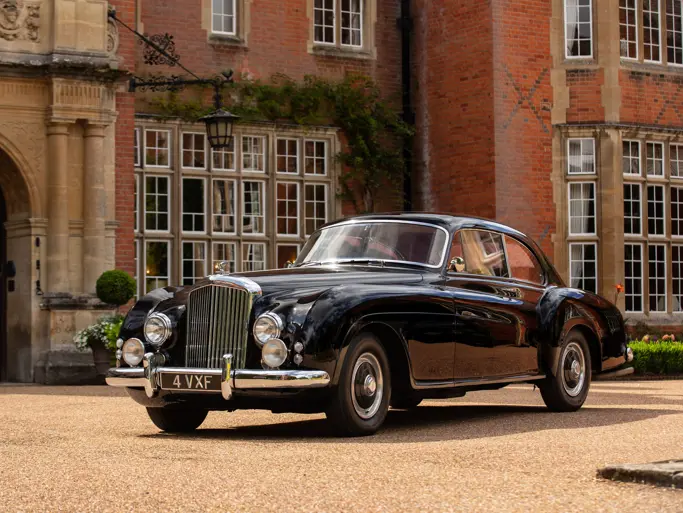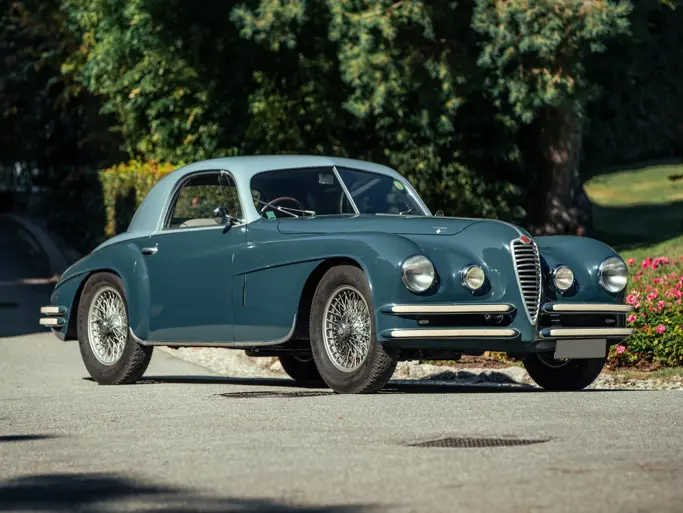The Bruce Weiner Microcar Museum
1958 Goggomobil Dart
{{lr.item.text}}
$54,050 USD | Sold
 | Madison, Georgia
| Madison, Georgia
{{internetCurrentBid}}
{{internetTimeLeft}}

An Australian icon.
SPECIFICATIONS
Manufacturer: Buckle Motors Pty. Ltd.
Origin: Sydney, New South Wales, Australia
Production: 697
Motor: Glas 2-cyl, 2-stroke
Displacement: 293 cc
Power: 15 hp
Length: 10 ft.
Identification No. 131383
Buckle Motors had a large plant in Punchbowl, Australia, where they prepared cars like Armstrong-Siddeley, Citroën, Borgward, Goliath, Lloyd, and DeSoto trucks for the Australian market. An ambitious Bill Buckle wished to move on from his father’s extensive retail car business to actual production. He had been inspired, as had many entrepreneurs in the early fifties, by the possibilities of fiberglass as a body construction material. He took two years to develop a high-quality automobile, the Cobra-like Buckle 2.5-liter coupe, based on Ford Zephyr components, of which 25 examples were built from 1957.
In Australia there was a ready market for a light, economical car, and Buckle himself traveled to Bavaria, Germany to meet with the director of the largest, most successful small car firm in Europe, Hans Glas GmbH in Dingolfing. Despite the language barrier, he managed to secure a license for building Goggomobil cars in Australia. Rather than importing whole cars, he would import only complete chassis and parts, saving money on taxes and import duties. Using his experience with fiberglass from building his own cars, he pulled molds from original cars and produced near-exact copies of the sedan and coupe. The slab-sided transporter received a much more bulbous unique-to-Australia body.
But the Goggomobil Dart was Bill Buckle’s very own creation. He brought his drawings to panel beater Stan Brown, who made the steel original for the molds. As with the other Goggos, the standard pressed steel platform chassis was used. The Dart was much easier to mould than the other models, due to its lack of doors. It was made with two halves bolted together at the waistline. A dashboard, headlight nacelles, a trunk lid, and air intakes completed the assembly. Quite a few parts from the sedan were used, such as badges, lights, and the trunk grille. The window was a Renault Dauphine.
Buckle recalls, “We couldn’t make them fast enough. The reviewers of the time loved it, and with the 400-cubic centimeter motor and an amazing constant-mesh gearbox, you couldn’t stay with it. A number of motoring journalists bought them.”
Today, the sleek little sportster has become an Australian icon, with a popular advert for the Yellow Pages that featured Tommy Dysart saying, “Not the Dart” and typing the letters “G O G G O,” securing it firmly in the Australian public’s mind. This car is an excellent, very correct example of a highly desirable collector’s microcar.

